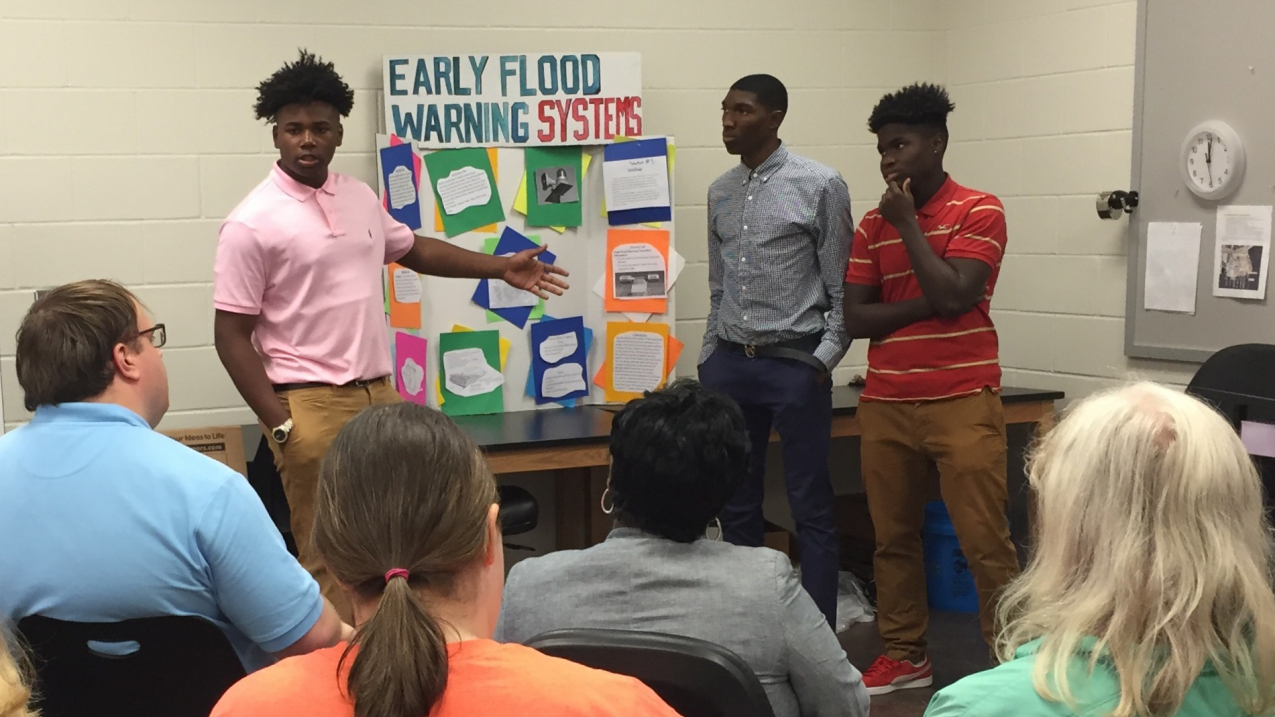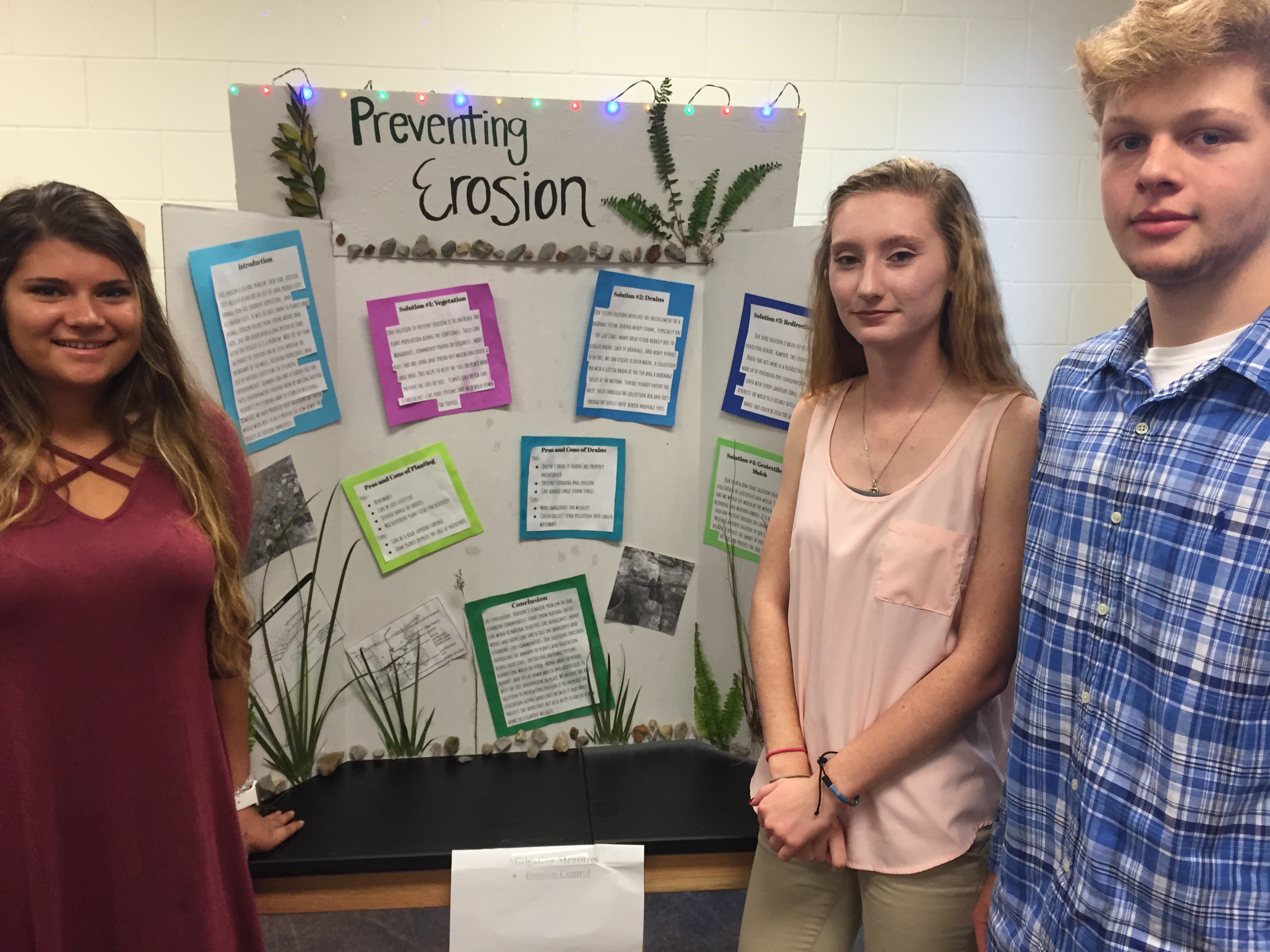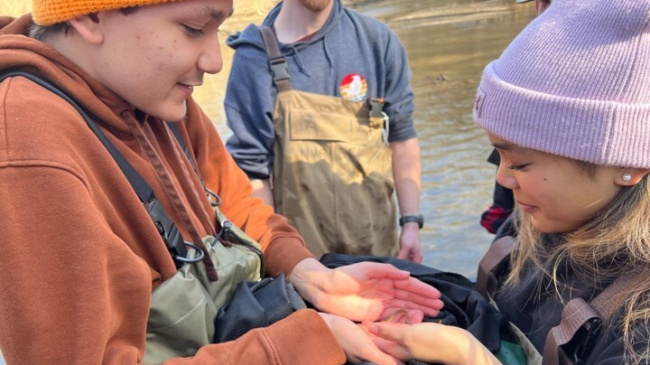Want to teach students about how to build resilient communities? Give them the same tools professionals use.
Coastal wetlands benefit nearby communities by providing storm protection, flood control, improved water quality, and recreational opportunities. Unfortunately, they are also disappearing at a dramatically high rate, especially in the northern Gulf of Mexico where about 40 percent of U.S. coastal wetlands are located. Scientists aren't the only ones scratching their heads over how to stem the loss of wetlands to sea level rise and keep communities safe from coastal hazards. Now, students in the Pascagoula School District have taken on this challenge too.

Third place winners of the Resilience MWEE Stewardship Summit at the Gulf Coast Research Laboratory in Ocean Springs, Mississippi. Dominic Blankenship, Nic Steele, and Tommie Ashford are in Mr. Cooper Kimbrell’s Marine Science class at Gautier High School. (Image credit: Gulf Coast Research Laboratory, University of Southern Mississippi)
“Meaningful Watershed Education Experience (MWEE) for Resilience to Accelerated Sea Level Rise and Flooding Risk," a K-12 education project funded by the Gulf of Mexico B-WET program, was held at the University of Southern Mississippi's Gulf Coast Research Lab Marine Education Center. Through this "MWEE," K-12 students use tools typically employed by professional decision makers to investigate real world data related to rising sea level near the Pascagoula River.
The project team worked with Pascagoula teachers to develop five lessons on modeling and predicting changes in sea level rise using tools developed by the NOAA Office for Coastal Management. Students learned how to use the Sea Level Rise Viewer to visualize future changes in water level. They also learned how to prepare for hazards and large scale change using the Coastal Community Resilience Index offsite link.

Students learned to use these tools through classroom research on sea level rise, coastal issues and hazards, and climate change. They then ventured out into the field at Grand Bay National Estuarine Research Reserve offsite link. Students were able to see their local estuary up close and meet scientists from the Gulf Coast Research Lab. The trips to the Reserve gave students the opportunity to see how NOAA and the state of Mississippi are working to understand and model changes in the ecosystem.
Finally, students applied what they learned to address the question, "How can we make Pascagoula and surrounding communities more resilient?" After considering various hazard scenarios such as major flooding or hurricane impacts in their town, students developed solutions based on their research, experiences, and the tools they learned to use. Their projects culminated in presenting their solutions to community leaders and resilience professionals.
Through problem-based learning, this project helps young people understand the risk of rising sea level and use science confidently to address environmental problems. Ultimately, these students can contribute to a more resilient community, better able to withstand and recover from hazardous events such as hurricanes, coastal storms, and flooding.



